Culture as the Foundation of Business Success
Culture is the lifeblood of any organisation. From shaping employee behaviours to syncing teams toward a shared goal, a strong organisational...
Engage
|
Hire
|
Develop
|
Assess
|
|
Deeply understand your organisation with science-backed analytics on your culture, team design, and engagement. |
Automatically match to candidates who are a great fit for your team culture and who are intrinsically motivated to succeed. |
Back your onboarding, compliance and skill development with industry-leading credentialling, competency and capability expertise.
|
Reimagine skills assessment and certification with dedicated tools designed to elevate your competency frameworks.
|
.png?width=383&height=200&name=team%20(1).png)
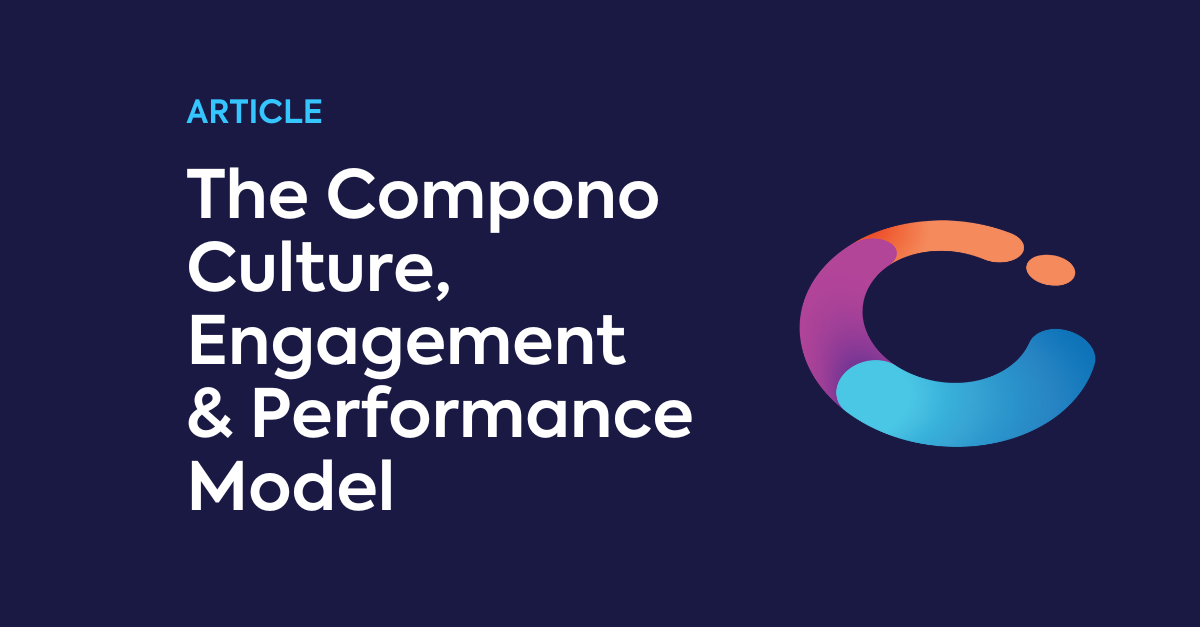
Table of Contents
Organisational culture and employee engagement don’t just shape your business; they define its success. Imagine a workplace where employees feel deeply connected to their mission, teams thrive, and performance reflects that alignment.
That’s the power of getting culture and engagement right.
Enter the Compono Culture Engagement Performance Model—designed to bridge the gap between how things are and how they should be. Through a unique, science-backed approach, Compono provides the tools to not just understand, but transform your workplace dynamics.
Ready to discover how to elevate team performance and drive meaningful outcomes? Keep reading. 👇
Organisational culture is the fabric that binds the fundamental elements of an organisation together to create effective and efficient operations. It's the "glue" that unites employees and influences how they interact and approach their work and is a source of competitive advantage - Edgar Schein, Professor Emeritus at MIT
Every organisation has its own unique personality, just like people do.
The unique personality of an organisation is its culture. Organisational culture is an invisible yet powerful force that make a deep impact on employees and their behaviour, as well as their relationship amongst themselves.
One popular definition of organisational culture is “The way we do things around here.” This definition captures an important concept — organisations need to do more than simply get things done. To have a sustainable business and build a competitive advantage, it is important that things are done the ‘right way’.
Implied in this definition is that each organisation has a certain way of how it goes about (or need to go about) meeting its goals and objectives, provides a sense of direction and purpose for employees, solves problems, and shapes the behaviour of the individuals within the group.
If an organisation’s culture is its “personality,” then employee engagement (or climate) is its “mood.” It refers to employees’ perceptions and feelings (positive or negative) at a specific point in time about how the organisation is functioning, as well as their experiences with their teams and job roles. As a subset of culture, employee engagement offers insight into the underlying work environment, influencing employee effort and behaviour.
Many organisations evaluate employee engagement in isolation from culture, often through ‘pulse’ or climate surveys. This can only tell you if there is an issue with how people feel about their jobs and the workplace. It won't pinpoint where the deeper, more systemic problems lie.
Imagine heading to the doctor because you're not feeling well. The doctor might take your temperature, ask how you're doing, and check your heart rate. These quick checks can show that something's off—maybe you’ve got a fever or an elevated heart rate—but they won’t tell you what's causing the problem. Without a more in-depth look, like blood tests or scans, the real reason behind your symptoms stays a mystery.

Just like a basic health check can't really pinpoint an underlying illness, engagement measurements or 'pulse' alone don't reveal where the real issues are in company culture. We need to look past the surface symptoms and take a more thorough approach to tackle the root cause of the problem.
The culture you create will foster either positive or negative employee engagement and ultimately affect individual, team, and company performance. That’s why it’s so powerful to examine culture and engagement together:
By looking at both, you can spot not just the symptoms but also the root causes, helping you make the right changes to improve the workplace. By creating a culture that drives positive engagement, employees dedicate more time and energy to their work. This boosts loyalty, leads to more satisfied customers, and ultimately drives higher business performance.
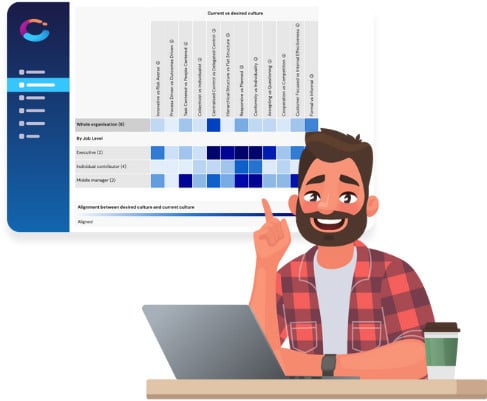
Companies that focus on aligning their culture consistently see stronger performance across the board. For example:
By creating an environment where individuals connect to shared values and goals, organisations elevate employee satisfaction, spark innovation, and power sustainable long-term growth.

The Compono Culture, Engagement and Performance Model (depicted below) illustrates a continuous feedback loop connecting culture - “the way we do things” - as a powerful upstream driver that shapes how employees feel, think, and behave at work. In other words, culture influences engagement which in turn informs how well they align with and carry out the company’s objectives. When engagement is high and there is high alignment with the current and desired company culture, employees adopt the behaviours that enable the company’s goals to be met. This is all sustained by ongoing feedback at the company, team and individual levels.
In practical terms:
By embedding alignment between the current culture and desired culture, companies continually reinforce the attitudes and beliefs that lead to high engagement, which then propels the organisation toward its objectives. In this sense, culture underpins everything else: get culture right, and you significantly improve the chances of meeting or surpassing your business goals. This is all sustained by ongoing feedback at both the company, team and individual levels.
Compono’s culture assessment is grounded in academic research in organisational culture and climate. Construct Validity was evaluated using the statical approach of Principal Component Analysis (PCA). The assessment consists of 12 dimensions that load on a single factor that we call “Culture” (p < 0.001) and demonstrates a high degree of internal consistency (α = 0.837). This means that each item is internally aligned measuring the same construct – ‘Culture’. Our Culture assessment demonstrates high face validity with organisations reporting that results are easy to read and understand.
Compono’s 12 culture dimensions are:
|
Innovative |
The work environment is dynamic and creative vs. Controlled and regulated. |
Risk Averse |
|
Process Driven |
Performing work in the correct manner vs. Achieving results even if shortcuts are taken. |
Outcomes Driven |
|
Task Centered |
Task accomplishment is emphasised vs. Valuing employee social and personal needs. |
People Centered |
|
Collectivist |
Emphasising team achievements vs. Recognising individual accomplishments. |
Individualist |
|
Centralised Control |
Decision-making restricted to leadership vs. Empowering all employees. |
Delegated Control |
|
Hierarchical Structure |
Many formal layers of management vs. a minimal, flatter hierarchy. |
Flat Structure |
|
Responsive |
Reacting to immediate challenges vs. Prioritising long-term strategic goals. |
Planned |
|
Conformity |
Following defined norms vs. Allowing personal freedom. |
Individuality |
|
Accepting |
Compliance with directives vs. Encouraging employees to challenge management. |
Questioning |
|
Cooperation |
Promoting collaboration vs. Fostering internal competition. |
Competition |
|
Customer Focused |
Prioritising customer satisfaction vs. Improving internal processes. |
Internal Effectiveness |
|
Formal |
Operating with many rigid policies vs. Working with more flexible guidelines. |
Informal |
Each of these dimensions reflects a key aspect of how work is done in an organisation and helps in aligning culture with strategic objectives.

We measure Employee Engagement in two ways: Employee perceptions of Company Performance and Work Atmosphere.
Our survey is underpinned by strategic business frameworks including the Balanced Scorecard and McKinsey 7S that evaluates performance across 4 dimensions:
How employees perceive these aspects ties company culture to performance results, helping to shape the work environment to support the strategic goals we want to achieve.

Our survey encompasses the 5 key work atmosphere dimensions of:
Academic frameworks such as the Job Demands-Resources model and self-determination theory show that engagement and motivation are key drivers of performance, while classic theories like Herzberg’s Two-Factor Theory link job satisfaction to retention and productivity.
Turnover intention offers a predictive measure of employee retention risk, and overall climate reflects the shared perceptions that ultimately shape an organization’s culture. Together, these dimensions capture both individual and collective aspects of the work environment, providing insights that can be used to strengthen the underlying culture and drive better organisational outcomes.

Along with the quantitative insights on company culture and employee engagement, Compono enables companies to capture qualitative feedback from employees. This feedback contextualises employee perspectives to better align culture, engagement, and business objectives.
Feedback offers deeper, more nuanced insights into employee perceptions. You get to understand not just what employees think, but also why they feel that way, all while offering practical suggestions for improvement.
It's the final piece of the puzzle to help you drive more targeted and meaningful changes.
‘Adaptive cultures’ as a concept focuses broadly on an organisation’s ability to change, but it lacks specificity in measuring key levers of cultural alignment.

Compono’s approach is superior because:
In contrast, adaptive culture frameworks often fail to provide specific, measurable insights on what needs to change and lack the ability to track progress objectively.

Compono provides a breakthrough approach to assessing and aligning organisational culture and employee engagement. Unlike outdated, surface-level "pulse" surveys or generic adaptive culture models, Compono dives deep, delivering precise, data-driven insights that organisations simply can’t afford to overlook.
By using scientifically validated assessments, Compono identifies cultural gaps, links engagement to performance, and offers clear, actionable steps to drive meaningful change. Companies gain the tools to boost employee loyalty, spark innovation, and achieve higher revenue by creating an environment that aligns with business objectives.
This is not just another survey tool. Compono's model connects culture, engagement, and performance with a level of depth no traditional framework can match. It provides a competitive edge through a holistic analysis of organisational dynamics, delivering a roadmap that empowers leaders to act quickly and decisively.
Get culture right, and everything follows. With Compono, you can transform workforce engagement, elevate business results, and lead your industry.
Don’t settle for band-aid solutions when real change starts here.
Talk to an expert and find out how Compono can help you get the competitive edge with culture, engagement and performance.
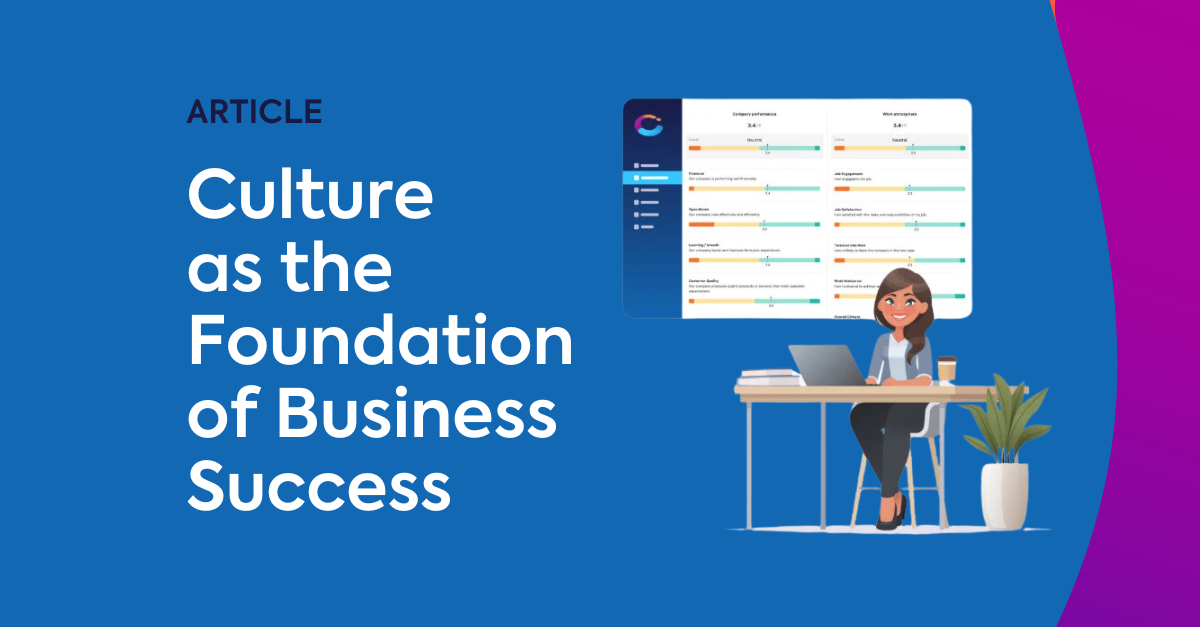
Culture is the lifeblood of any organisation. From shaping employee behaviours to syncing teams toward a shared goal, a strong organisational...

Last weekend, I attended a friend’s BBQ where we discussed sports and the country’s economic state, when inevitably the conversation turned to work....
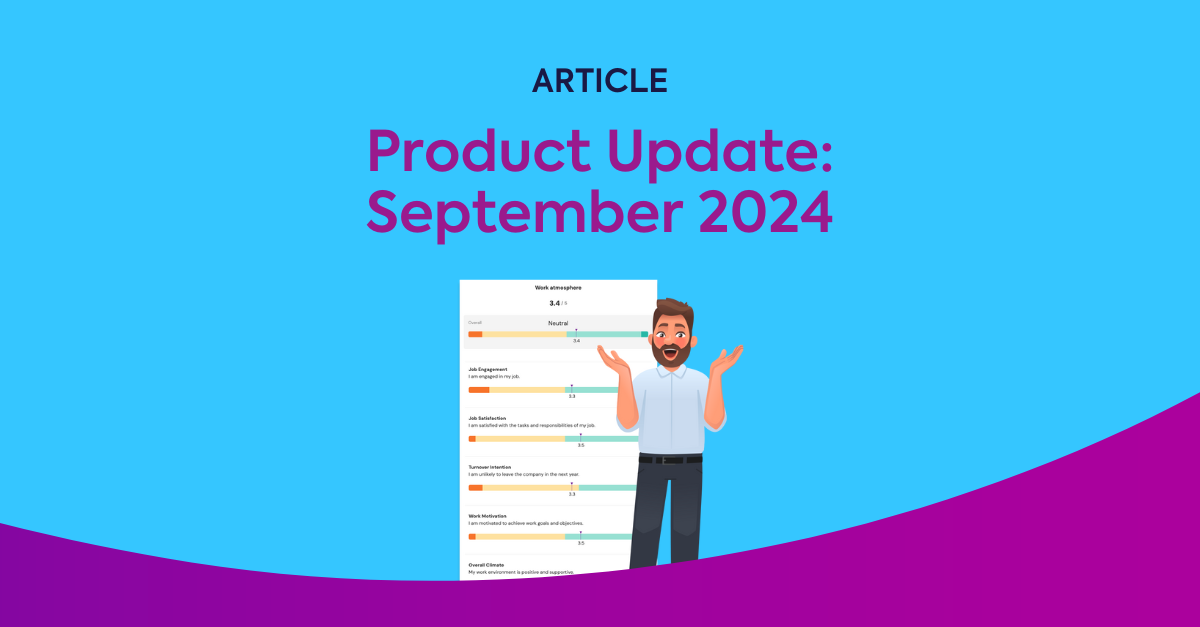
Follow our monthly product updates as we share the latest features to help you strategically design and develop teams and the work environment.
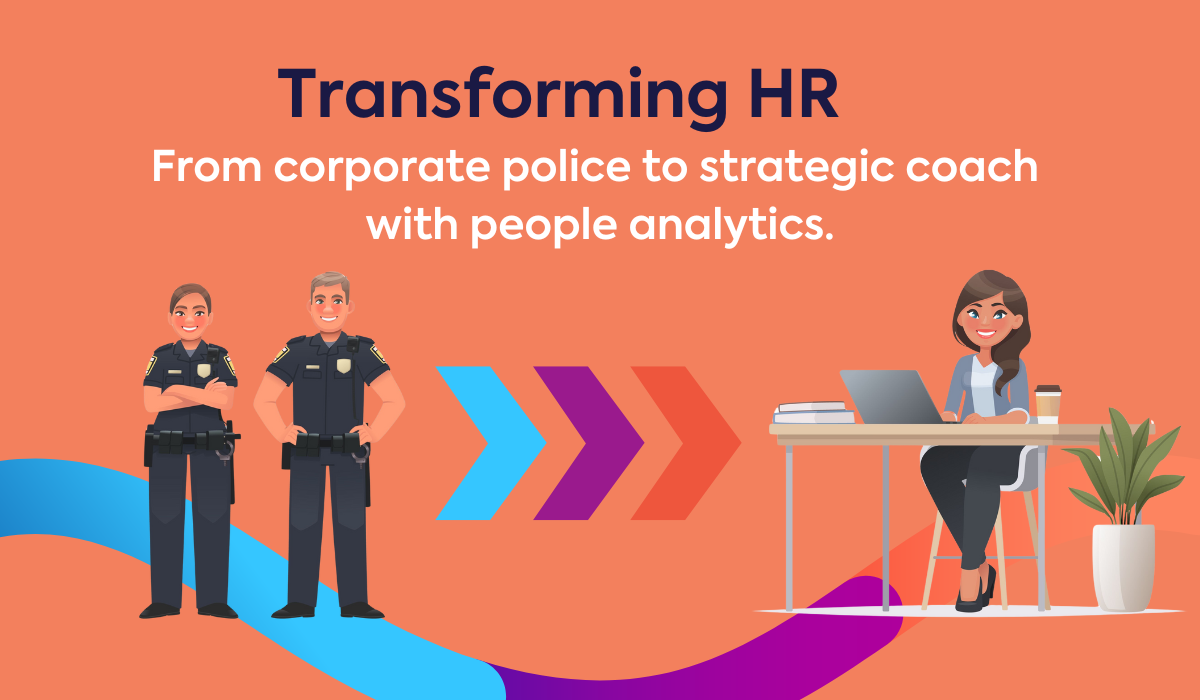
1 min read
“You don’t have people problems until you get HR”. Ouch! Can you believe that I've heard this from some business owners and execs? Let's shine a...
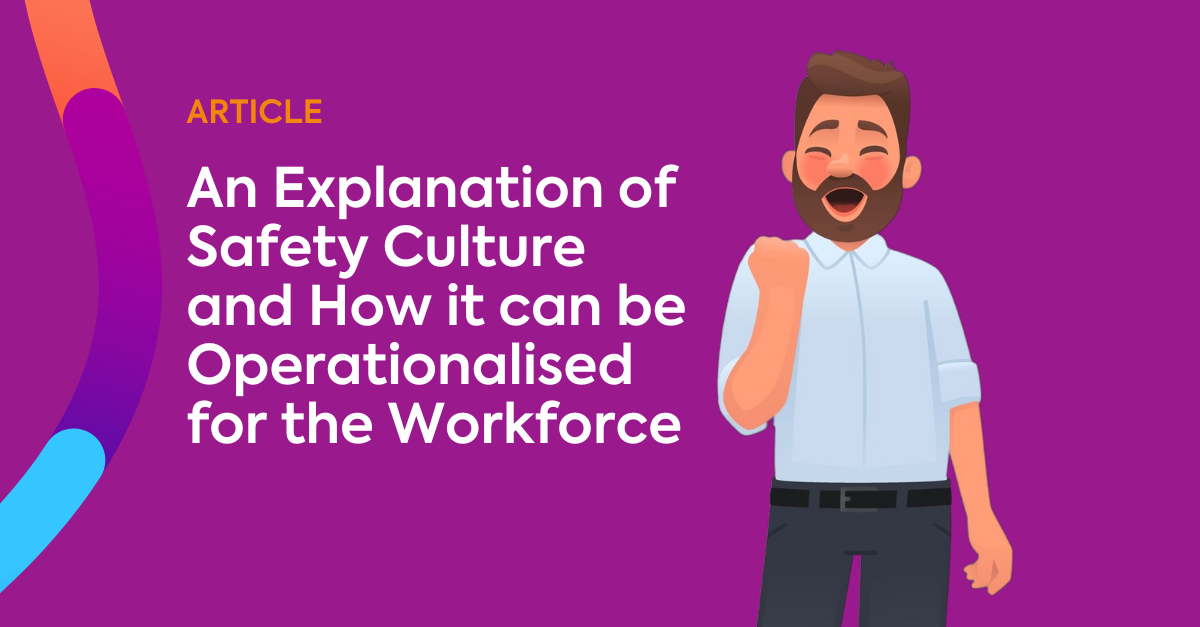
As CEO of Compono, I’m a firm believer that it’s simply not enough for me and my team to focus only on building intelligent software. It is also...
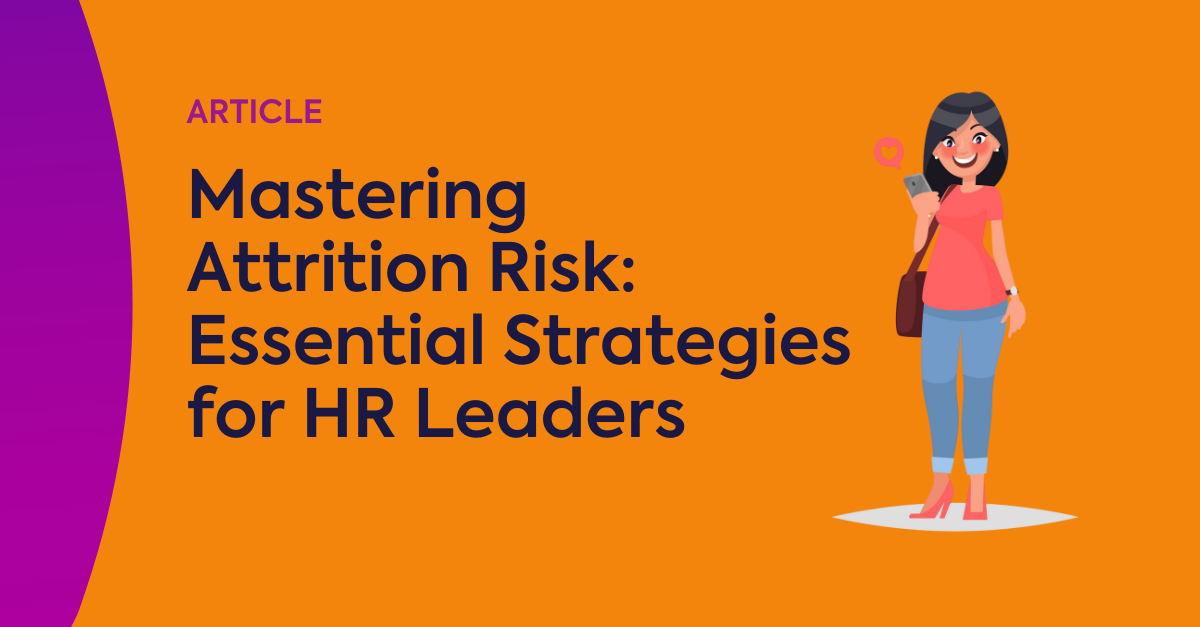
Overview Mastering attrition risk requires the implementation of essential strategies that enhance employee engagement, acknowledge contributions,...